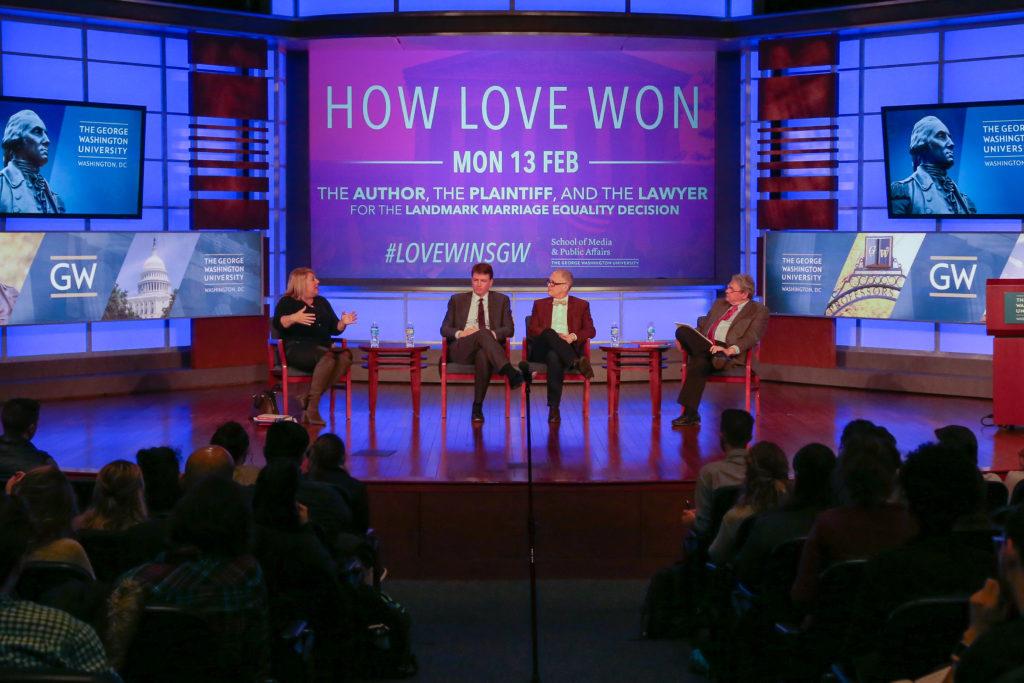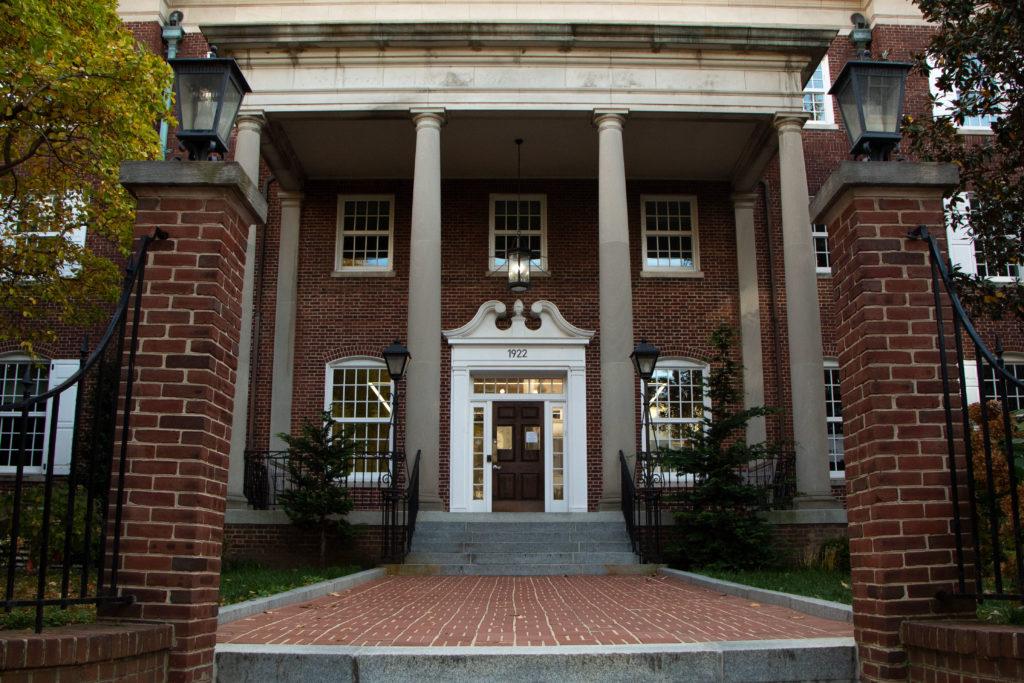The winning side of the landmark Supreme Court case that legalized same-sex marriage in the U.S. reconvened in the Jack Morton Auditorium on Monday afternoon to celebrate a new book chronicling the historic case.
The panel, hosted by the School of Media and Public Affairs, featured lead plaintiff Jim Obergefell along with journalist and SMPA professor Debbie Cenziper, co-authors of the book “Love Wins” about the legal and personal stories behind the case.
They were joined by Douglas Hallward-Driemeier, one of the two lawyers who argued the case before the Supreme Court and SMPA professor Steve Roberts, who moderated the discussion.
The panel offered an inside look into the making of the groundbreaking case and the intricacies of writing a book chronicling history as it happened.
1. A start as a love story
Obergefell said he considers himself “an accidental activist” because he didn’t intend to be at the forefront of the legal battle over same-sex marriage.
He said he was drawn into the fight because he wanted to marry his long-time partner John Arthur, who was dying of ALS, also known as Lou Gehrig’s disease. The couple married on a tarmac in Maryland, where same-sex marriage was legal, but the marriage wasn’t recognized as legitimate in their home state of Ohio.
Obergefell said he worried his husband would legally die a single man despite their marriage.
“To see a death certificate, with a blank name for a spouse, is truly symbolic,” Roberts said.
Hallward-Driemeier said the love story between Obergefell and Arthur was a “narrative central to the legal story,” which helped build a compelling case.
Obergefell’s case, which was combined with other cases from Michigan and Tennessee, focused on the legal problems caused when states do not recognize same-sex marriages performed in other states.
2. A day in court
Obergefell and Hallward-Driemeier discussed the powerful emotions on the day of oral arguments at the Supreme Court in April 2015.
Hallward-Driemeier said before the hearing began he felt such intense pressure riding on the case that his whole body felt sharp pain.
“It wasn’t just about us,” Obergefell said. “It was about something greater than these 30 plaintiffs.”
Obergefell said he sat in the gallery with members of the general public. After the arguments, a man next to him told him he was an evangelical Republican and thanked Obergefell for changing his perspective.
Two months later, when the Supreme Court’s decision was released, Obergefell said
“It was the first time I felt like a full and equal American citizen,” he said.
3. Coming to the big screen
Cenziper said she was drawn to the story because many of the central characters, lawyers and plaintiffs were ordinary people who helped generate a massive cultural and legal change.
The new book, which Cenziper wrote over the course of six months with the help of Obergefell, is slated to become a movie.
20th Century Fox purchased the rights to a movie even before the book was finished and Cenziper said a screenplay is currently in the works.
“This is a love story and a legal thriller,” she said.





